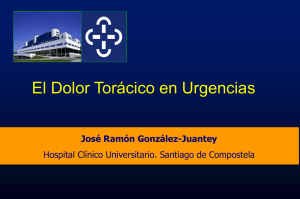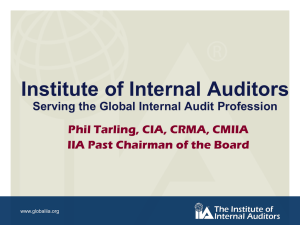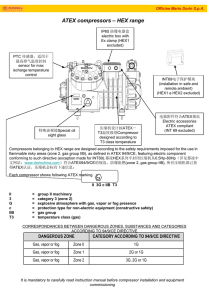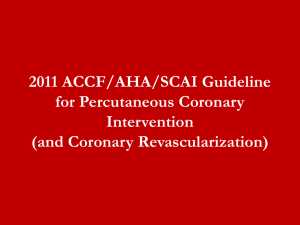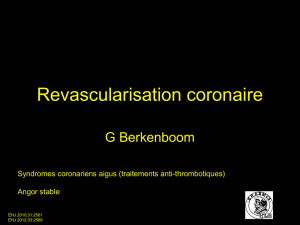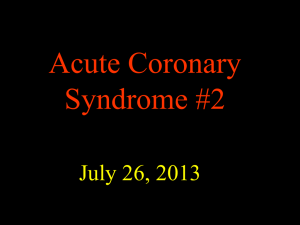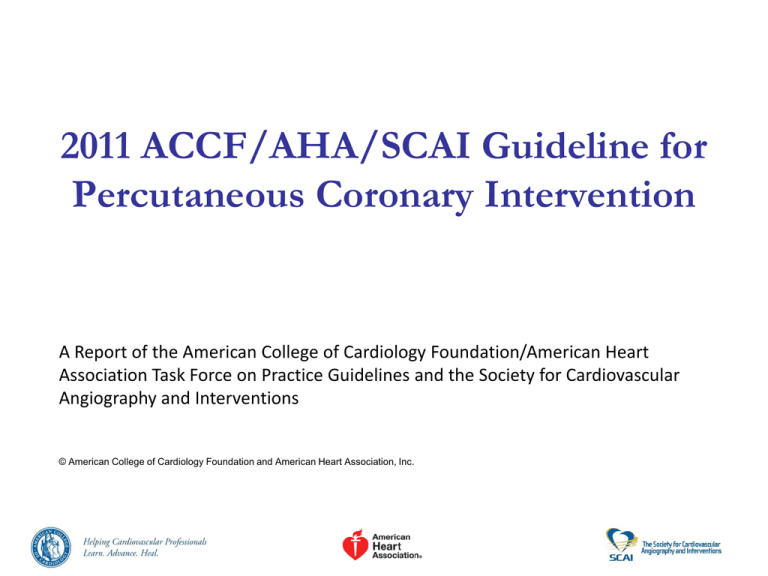
2011 ACCF/AHA/SCAI Guideline for
Percutaneous Coronary Intervention
A Report of the American College of Cardiology Foundation/American Heart
Association Task Force on Practice Guidelines and the Society for Cardiovascular
Angiography and Interventions
© American College of Cardiology Foundation and American Heart Association, Inc.
Citation
This slide set was adapted from the 2011
ACCF/AHA/SCAI Guideline for Percutaneous Coronary
Intervention. Published on November 7th ahead of print,
available at:
http://content.onlinejacc.org/cgi/content/full/j.jacc.2011.08.007
The full-text guidelines are also available on the following Web
sites:
ACC (www.cardiosource.org), AHA (my.americanheart.org), and
SCAI (www.scai.org)
Special Thanks To
Slide Set Editor
Glenn N. Levine, MD, FACC, FAHA
The PCI Guideline Writing Committee Members
Glenn N. Levine, MD, FACC, FAHA, Chair
Eric R. Bates, MD, FACC, FAHA, Vice Chair
James C. Blankenship, MD, FACC, FSCAI, Vice Chair
Steven R. Bailey, MD, FACC, FSCAI
John A. Bittl, MD, FACC
Bojan Cercek, MD, FACC, FAHA
Charles E. Chambers, MD, FACC, FSCAI
Stephen G. Ellis, MD, FACC
Robert A. Guyton, MD, FACC
Steven M. Hollenberg, MD, FACC
Umesh N. Khot, MD, FACC
Richard A. Lange, MD, FACC, FAHA
Laura Mauri, MD, MSc, FACC, FSCAI
Roxana Mehran, MD, FACC, FAHA, FSCAI
Issam D. Moussa, MD, FACC, FAHA, FASCAI
Debabrata Mukherjee, MD, FACC, FSCAI
Brahmajee K. Nallamothu, MD, FACC
Henry H. Ting, MD, FACC, FAHA
Classification of Recommendations and Levels of Evidence
A recommendation with
Level of Evidence B or C
does not imply that the
recommendation is weak.
Many important clinical
questions addressed in
the guidelines do not lend
themselves to clinical
trials. Although
randomized trials are
unavailable, there may be
a very clear clinical
consensus that a
particular test or therapy
is useful or effective.
*Data available from
clinical trials or registries
about the usefulness/
efficacy in different
subpopulations, such as
sex, age, history of
diabetes, history of prior
myocardial infarction,
history of heart failure,
and prior aspirin use.
†For comparative
effectiveness
recommendations (Class I
and IIa; Level of Evidence
A and B only), studies
that support the use of
comparator verbs should
involve direct
comparisons of the
treatments or strategies
being evaluated.
Introduction
The PCI guideline reflects the growth of knowledge in the field and parallels the
many advances and innovations in the field of interventional cardiology, including
primary PCI, BMS and DES, IVUS and physiologic assessments of stenosis, and
newer antiplatelet and anticoagulant therapies. This guideline addresses ethical
aspects of PCI, vascular access considerations, CAD revascularization, including
hybrid revascularization, revascularization before noncardiac surgery, optical
coherence tomography, advanced hemodynamic support devices, no-reflow
therapies, and vascular closure devices.
Most of this document is organized according to “patient flow,” consisting of
preprocedural considerations, procedural considerations, and postprocedural
considerations.
The STEMI, PCI, and CABG guidelines were written concurrently, with additional
collaboration with the SIHD guideline writing committee, allowing for greater
collaboration on topics such as PCI in STEMI and revascularization strategies in
patients with CAD.
Guideline for CABG
CAD Revascularization
CAD Revascularization
Heart Team Approach to
Revascularization Decisions
Heart Team Approach to
Revascularization Decisions
I IIa IIb III
A Heart Team approach to revascularization is
recommended in patients with unprotected left
main or complex CAD.
I IIa IIb III
Calculation of the STS and SYNTAX scores is
reasonable in patients with unprotected left main
and complex CAD.
CAD Revascularization
Revascularization to Improve
Survival
Revascularization to Improve Survival: Left
Main CAD Revascularization
I IIa IIb III
I IIa IIb III
CABG to improve survival is recommended for patients with
significant (≥50% diameter stenosis) left main CAD.
PCI to improve survival is reasonable as an alternative to
CABG in selected stable patients with significant (≥50%
diameter stenosis) unprotected left main CAD with: 1)
anatomic conditions associated with a low risk of PCI
procedural complications and a high likelihood of a good
long-term outcome (e.g., a low SYNTAX score [≤22], ostial
or trunk left main CAD); and 2) clinical characteristics that
predict a significantly increased risk of adverse surgical
outcomes (e.g., STS-predicted risk of operative mortality
≥5%).
Revascularization to Improve Survival: Left
Main CAD Revascularization (cont.)
I IIa IIb III
PCI to improve survival is reasonable in patients
with UA/NSTEMI when an unprotected left main
coronary artery is the culprit lesion and the
patient is not a candidate for CABG.
I IIa IIb III
PCI to improve survival is reasonable in patients
with acute STEMI when an unprotected left main
coronary artery is the culprit lesion, distal
coronary flow is TIMI (Thrombolysis In
Myocardial Infarction) grade <3, and PCI can be
performed more rapidly and safely than CABG.
Revascularization to Improve Survival: Left
Main CAD Revascularization (cont.)
I IIa IIb III
PCI to improve survival may be reasonable as an
alternative to CABG in selected stable patients with
significant (≥50% diameter stenosis) unprotected left main
CAD with: 1) anatomic conditions associated with a low to
intermediate risk of PCI procedural complications and an
intermediate to high likelihood of good long-term outcome
(e.g., low-intermediate SYNTAX score of <33, bifurcation
left main CAD); and 2) clinical characteristics that predict
an increased risk of adverse surgical outcomes (e.g.,
moderate-severe chronic obstructive pulmonary disease,
disability from previous stroke, or previous cardiac
surgery; STS-predicted risk of operative mortality >2%).
Revascularization to Improve Survival: Left
Main CAD Revascularization (cont.)
I IIa IIb III
Harm
PCI to improve survival should not be performed
in stable patients with significant (≥50% diameter
stenosis) unprotected left main CAD who have
unfavorable anatomy for PCI and who are good
candidates for CABG.
Revascularization to Improve Survival: NonLeft Main CAD Revascularization
I IIa IIb III
CABG to improve survival is beneficial in patients
with significant (≥70% diameter) stenoses in 3
major coronary arteries (with or without
involvement of the proximal LAD artery) or in the
proximal LAD plus 1 other major coronary artery.
Revascularization to Improve Survival: NonLeft Main CAD Revascularization (cont.)
CABG
I IIa IIb III
PCI
I IIa IIb III
CABG or PCI to improve survival is
beneficial in survivors of sudden cardiac
death with presumed ischemia-mediated
ventricular tachycardia caused by a
significant (≥70% diameter) stenosis in a
major coronary artery.
Revascularization to Improve Survival: NonLeft Main CAD Revascularization (cont.)
I IIa IIb III
CABG to improve survival is reasonable in patients with
significant (≥70% diameter) stenoses in 2 major coronary
arteries with severe or extensive myocardial ischemia (e.g.,
high-risk criteria on stress testing, abnormal intracoronary
hemodynamic evaluation, or >20% perfusion defect by
myocardial perfusion stress imaging) or target vessels
supplying a large area of viable myocardium.
I IIa IIb III
CABG to improve survival is reasonable in patients with
mild-moderate left ventricular systolic dysfunction (ejection
fraction 35% to 50%) and significant (≥70% diameter
stenosis) multivessel CAD or proximal LAD coronary artery
stenosis, when viable myocardium is present in the region
of intended revascularization.
Revascularization to Improve Survival: NonLeft Main CAD Revascularization (cont.)
I IIa IIb III
I IIa IIb III
CABG with a LIMA graft to improve survival is
reasonable in patients with a significant (≥70%
diameter) stenosis in the proximal LAD artery and
evidence of extensive ischemia.
It is reasonable to choose CABG over PCI to
improve survival in patients with complex 3vessel CAD (e.g., SYNTAX score >22) with or
without involvement of the proximal LAD artery
who are good candidates for CABG.
Revascularization to Improve Survival: NonLeft Main CAD Revascularization (cont.)
I IIa IIb III
CABG is probably recommended in preference to PCI to improve
survival in patients with multivessel CAD and diabetes
mellitus, particularly if a LIMA graft can be anastomosed to the
LAD artery.
I IIa IIb III
The usefulness of CABG to improve survival is uncertain in
patients with significant (≥70%) stenoses in 2 major coronary
arteries not involving the proximal LAD artery and without
extensive ischemia.
Revascularization to Improve Survival: NonLeft Main CAD Revascularization (cont.)
I IIa IIb III
The usefulness of PCI to improve survival is uncertain in
patients with 2- or 3-vessel CAD (with or without
involvement of the proximal LAD artery) or 1-vessel
proximal LAD disease.
I IIa IIb III
CABG might be considered with the primary or sole intent
of improving survival in patients with SIHD with severe LV
systolic dysfunction (EF<35%) whether or not viable
myocardium is present.
I IIa IIb III
The usefulness of CABG or PCI to improve survival is
uncertain in patients with previous CABG and extensive
anterior wall ischemia on noninvasive testing.
Revascularization to Improve Survival: NonLeft Main CAD Revascularization (cont.)
I IIa IIb III
Harm
CABG or PCI should not be performed with the
primary or sole intent to improve survival in
patients with SIHD with 1 or more coronary
stenoses that are not anatomically or functionally
significant (e.g., <70% diameter nonleft main
coronary artery stenosis, fractional flow reserve
>0.80, no or only mild ischemia on noninvasive
testing), involve only the left circumflex or right
coronary artery, or subtend only a small area of
viable myocardium.
Revascularization to Improve Symptoms
I IIa IIb III
CABG or PCI to improve symptoms is beneficial
in patients with 1 or more significant (≥70%
diameter) coronary artery stenoses amenable to
revascularization and unacceptable angina
despite GDMT.
I IIa IIb III
CABG or PCI to improve symptoms is reasonable
in patients with 1 or more significant (≥70%
diameter) coronary artery stenoses and
unacceptable angina for whom GDMT cannot be
implemented because of medication
contraindications, adverse effects, or patient
preferences.
Revascularization to Improve Symptoms (cont.)
I IIa IIb III
I IIa IIb III
PCI to improve symptoms is reasonable in
patients with previous CABG, 1 or more
significant (≥70% diameter) coronary artery
stenoses associated with ischemia, and
unacceptable angina despite GDMT.
It is reasonable to choose CABG over PCI to
improve symptoms in patients with complex 3vessel CAD (e.g., SYNTAX score >22), with or
without involvement of the proximal LAD artery
who are good candidates for CABG.
Revascularization to Improve Symptoms (cont.)
I IIa IIb III
CABG to improve symptoms might be reasonable
for patients with previous CABG, 1 or more
significant (≥70% diameter) coronary artery
stenoses not amenable to PCI, and unacceptable
angina despite GDMT.
I IIa IIb III
Transmyocardial laser revascularization
performed as an adjunct to CABG to improve
symptoms may be reasonable in patients with
viable ischemic myocardium that is perfused by
arteries that are not amenable to grafting.
Revascularization to Improve Symptoms (cont.)
I IIa IIb III
I IIa IIb III
Harm
CABG or PCI to improve symptoms should not
be performed in patients who do not meet
anatomic (≥50% left main or ≥70% nonleft main
stenosis) or physiologic (e.g., abnormal fractional
flow reserve) criteria for revascularization.
CAD Revascularization
Dual Antiplatelet Therapy
Compliance and Stent
Thrombosis
Dual Antiplatelet Therapy
Compliance and Stent Thrombosis
I IIa IIb III
Harm
PCI with coronary stenting (BMS or DES) should
not be performed if the patient is not likely to be
able to tolerate and comply with DAPT for the
appropriate duration of treatment based on the
type of stent implanted.
CAD Revascularization
Hybrid Coronary Revascularization
Hybrid Coronary Revascularization
I IIa IIb III
Hybrid coronary revascularization (defined as the planned
combination of LIMA-to-LAD artery grafting and PCI of ≥1
non-LAD coronary arteries) is reasonable in patients with 1 or
more of the following:
a.Limitations to traditional CABG, such as a heavily calcified
proximal aorta or poor target vessels for CABG (but
amenable to PCI);
b.Lack of suitable graft conduits;
c.Unfavorable LAD artery for PCI (i.e., excessive vessel
tortuosity or chronic total occlusion).
Hybrid Coronary Revascularization
(cont.)
I IIa IIb III
Hybrid coronary revascularization (defined as
the planned combination of LIMA-to-LAD artery
grafting and PCI of ≥1 non-LAD coronary
arteries) may be reasonable as an alternative
to multivessel PCI or CABG in an attempt to
improve the overall risk-benefit ratio of the
procedures.
Preprocedural Considerations
Radiation Safety
Radiation Safety
I IIa IIb III
Cardiac catheterization laboratories should
routinely record relevant available patient
procedural radiation dose data (e.g., total
air kerma at the international reference
point [Ka,r], air kerma air product [PKA],
fluoroscopy time, number of cine images),
and should define thresholds with
corresponding follow-up protocols for
patients who receive a high procedural
radiation dose.
Preprocedural Considerations
Contrast-Induced Acute Kidney
Injury
Contrast-Induced Acute Kidney Injury
I IIa IIb III
Patients should be assessed for risk of
contrast-induced AKI before PCI.
I IIa IIb III
Patients undergoing cardiac catheterization
with contrast media should receive adequate
preparatory hydration.
I IIa IIb III
In patients with CKD (Crcl <60 mL/min), the
volume of contrast media should be
minimized.
Contrast-Induced Acute Kidney Injury (cont.)
I IIa IIb III
No Benefit
Administration of N-acetyl-L-cysteine is
not useful for the prevention of contrastinduced AKI.
Preprocedural Considerations
Anaphylactoid Reactions
Anaphylactoid Reactions
I IIa IIb III
I IIa IIb III
No Benefit
Patients with prior evidence of an
anaphylactoid reaction to contrast media
should receive appropriate steroid and
antihistamine prophylaxis before repeat
contrast administration.
In patients with a prior history of allergic
reactions to shellfish or seafood,
anaphylactoid prophylaxis for contrast
reaction is not beneficial.
Preprocedural Considerations
Statin Treatment
Statin Treatment
Statin-naive patients:
I IIa IIb III
Patients on chronic
statin therapy:
I IIa IIb III
Administration of a high-dose statin is
reasonable before PCI to reduce the risk of
periprocedural MI.
Administration of a high-dose statin is
reasonable before PCI to reduce the risk of
periprocedural MI.
Preprocedural Considerations
Bleeding Risk
Bleeding Risk
I IIa IIb III
All patients should be evaluated for
risk of bleeding before PCI.
Preprocedural Considerations
PCI in Hospitals Without OnSite Surgical Backup
PCI in Hospitals Without On-Site Surgical Backup
I IIa IIb III
Primary PCI is reasonable in hospitals without
on-site cardiac surgery, provided that
appropriate planning for program development
has been accomplished.
I IIa IIb III
Elective PCI might be considered in hospitals
without on-site cardiac surgery, provided that
appropriate planning for program development
has been accomplished and rigorous clinical and
angiographic criteria are used for proper patient
selection.
PCI in Hospitals Without On-Site Surgical Backup
(cont.)
I IIa IIb III
Harm
Primary or elective PCI should not be
performed in hospitals without on-site
cardiac surgery capabilities without a
proven plan for rapid transport to a
cardiac surgery operating room in a
nearby hospital or without appropriate
hemodynamic support capabilities for
transfer.
Procedural Considerations
Vascular Access
Vascular Access
I IIa IIb III
The use of radial artery access can
be useful to decrease access site
complications.
Procedural Considerations
PCI in Specific Clinical
Situations
PCI in Specific Clinical Situations: UA/NSTEMI
I IIa IIb III
An early invasive strategy (i.e.,
diagnostic angiography with intent to
perform revascularization) is indicated
in UA/NSTEMI patients who have
refractory angina or hemodynamic or
electrical instability (without serious
comorbidities or contraindications to
such procedures).
PCI in Specific Clinical Situations: UA/NSTEMI
(cont.)
I IIa IIb III
An early invasive strategy (i.e., diagnostic
angiography with intent to perform
revascularization) is indicated in initially
stabilized UA/NSTEMI patients (without
serious comorbidities or contraindications
to such procedures) who have an
elevated risk for clinical events.
PCI in Specific Clinical Situations: UA/NSTEMI
(cont.)
I IIa IIb III
The selection of PCI or CABG as the
means of revascularization in the
patient with ACS should generally be
based on the same considerations
as those without ACS.
PCI in Specific Clinical Situations: UA/NSTEMI
(cont.)
I IIa IIb III
No Benefit
An early invasive strategy (i.e., diagnostic angiography with
intent to perform revascularization) is not recommended in
patients with extensive comorbidities (e.g., liver or
pulmonary failure, cancer) in whom
a. The risks of revascularization and comorbid
conditions are likely to outweigh the benefits of
revascularization,
b. There is a low likelihood of ACS despite acute chest
pain, or
c. Consent to revascularization will not be granted
regardless of the findings.
Procedural Considerations
PCI in Specific Clinical
Situations: STEMI
PCI in Specific Clinical Situations:
STEMI–Coronary Angiography
Strategies in STEMI
I IIa IIb III
A strategy of immediate coronary angiography with
intent to perform PCI (or emergency CABG) in
patients with STEMI is recommended for
a. Patients who are candidates for primary PCI.
I IIa IIb III
b. Patients with severe heart failure or cardiogenic
shock who are suitable candidates for
revascularization.
PCI in Specific Clinical Situations: STEMI–
Coronary Angiography Strategies in STEMI (cont.)
I IIa IIb III
A strategy of immediate coronary
angiography (or transfer for immediate
coronary angiography) with intent to
perform PCI is reasonable for patients
with STEMI, a moderate to large area of
myocardium at risk, and evidence of
failed fibrinolysis.
PCI in Specific Clinical Situations: STEMI–
Coronary Angiography Strategies in STEMI (cont.)
I IIa IIb III
A strategy of coronary angiography (or transfer
for coronary angiography) 3 to 24 hours after
initiating fibrinolytic therapy with intent to perform
PCI is reasonable for hemodynamically stable
patients with STEMI and evidence for successful
fibrinolysis when angiography and
revascularization can be performed as soon as
logistically feasible in this time frame.
PCI in Specific Clinical Situations: STEMI–Coronary
Angiography Strategies in STEMI (cont.)
I IIa IIb III
A strategy of coronary angiography
performed before hospital discharge
might be reasonable in stable patients
with STEMI who did not undergo cardiac
catheterization within 24 hours of STEMI
onset.
PCI in Specific Clinical Situations: STEMI–
Coronary Angiography Strategies in STEMI (cont.)
I IIa IIb III
No Benefit
A strategy of coronary angiography with
intent to perform PCI is not recommended
in patients with STEMI in whom the risks
of revascularization are likely to outweigh
the benefits or when the patient or
designee does not want invasive care.
Procedural Considerations
PCI in Specific Clinical
Situations: Primary PCI of the
Infarct Artery
PCI in Specific Clinical Situations: STEMI–
Primary PCI of the Infarct Artery
I IIa IIb III
I IIa IIb III
Primary PCI should be performed in patients
within 12 hours of onset of STEMI.
Primary PCI should be performed in patients
with STEMI presenting to a hospital with PCI
capability within 90 minutes of first medical
contact as a systems goal.
PCI in Specific Clinical Situations: STEMI–Primary
PCI of the Infarct Artery (cont.)
I IIa IIb III
Primary PCI should be performed in patients with STEMI
presenting to a hospital without PCI capability within 120
minutes of first medical contact as a systems goal.
I IIa IIb III
Primary PCI should be performed in patients with STEMI
who develop severe heart failure or cardiogenic shock and
are suitable candidates for revascularization as soon as
possible, irrespective of time delay.
PCI in Specific Clinical Situations: STEMI–
Primary PCI of the Infarct Artery (cont.)
I IIa IIb III
Primary PCI should be performed as soon
as possible in patients with STEMI and
contraindications to fibrinolytic therapy with
ischemic symptoms for <12 hours.
I IIa IIb III
Primary PCI is reasonable in patients with
STEMI if there is clinical and/or
electrocardiographic evidence of ongoing
ischemia between 12 and 24 hours after
symptom onset.
PCI in Specific Clinical Situations: STEMI–
Primary PCI of the Infarct Artery (cont.)
I IIa IIb III
I IIa IIb III
Harm
Primary PCI might be considered in
asymptomatic patients with STEMI and
higher risk presenting between 12 and 24
hours after symptom onset.
PCI should not be performed in a noninfarct
artery at the time of primary PCI in patients
with STEMI without hemodynamic
compromise.
Delayed or Elective PCI in Patients with STEMI
I IIa IIb III
PCI is reasonable in patients with STEMI and
clinical evidence for fibrinolytic failure or infarct
artery reocclusion.
I IIa IIb III
PCI is reasonable in patients with STEMI and a
patent infarct artery 3 to 24 hours after fibrinolytic
therapy.
I IIa IIb III
PCI is reasonable in patients with STEMI who
demonstrate ischemia on noninvasive testing.
Delayed or Elective PCI in Patients with STEMI
I IIa IIb III
PCI of a hemodynamically significant stenosis in a
patent infarct artery >24 hours after STEMI may be
considered as part of an invasive strategy.
I IIa IIb III
PCI of a totally occluded infarct artery >24 hours
after STEMI should not be performed in
asymptomatic patients with 1- or 2-vessel disease
if patients are hemodynamically and electrically
stable and do not have evidence of severe
ischemia.
PCI in Specific Clinical Situations:
Cardiogenic Shock
I IIa IIb III
PCI is recommended for patients with acute MI
who develop cardiogenic shock and are suitable
candidates.
I IIa IIb III
A hemodynamic support device is
recommended for patients with cardiogenic
shock after STEMI who do not quickly stabilize
with pharmacologic therapy.
PCI in Specific Clinical Situations:
Revascularization Before Noncardiac Surgery
I IIa IIb III
For patients who require PCI and who are
scheduled for elective noncardiac surgery in the
subsequent 12 months, a strategy of balloon
angioplasty, or BMS implantation followed by 4 to
6 weeks of DAPT, is reasonable.
PCI in Specific Clinical Situations:
Revascularization Before Noncardiac Surgery
I IIa IIb III
For patients with a DES who must undergo
urgent surgical procedures that mandate the
discontinuation of DAPT, it is reasonable to
continue aspirin if possible and restart the P2Y12
inhibitor as soon as possible in the immediate
postoperative period.
PCI in Specific Clinical Situations:
Revascularization Before Noncardiac Surgery
I IIa IIb III
Routine prophylactic coronary revascularization
should not be performed in patients with stable
CAD before noncardiac surgery.
Harm
I IIa IIb III
Harm
Elective noncardiac surgery should not be
performed in the 4 to 6 weeks after balloon
angioplasty or BMS implantation or the 12
months after DES implantation in patients in
whom the P2Y12 inhibitor will need to be
discontinued perioperatively.
Procedural Considerations
Coronary Stents
Coronary Stents
I IIa IIb III
Before implantation of DES, the interventional
cardiologist should discuss with the patient the
need for and duration of DAPT and the ability of
the patient to comply with and tolerate DAPT.
I IIaIIb III
PCI/STEMI
I IIaIIb III
UA/NSTEMI
DES is useful as an alternative to BMS to
reduce the risk of restenosis in cases in which
the risk of restenosis is increased and the
patient is likely to be able to tolerate and comply
with prolonged DAPT.
Coronary Stents (cont.)
I IIa IIb III
Balloon angioplasty or BMS should be used in
patients with high bleeding risk, inability to
comply with 12 months of DAPT, or with
anticipated invasive or surgical procedures
within the next 12 months during which time
DAPT may be interrupted.
Coronary Stents (cont.)
I IIa IIb III
PCI with coronary stenting should not be
performed if the patient is not likely to be able to
tolerate and to comply with DAPT.
Harm
I IIa IIb III
Harm
DES should not be implanted if the patient is not
likely to be able to tolerate and comply with
prolonged DAPT, or this cannot be determined
prior to stent implantation.
Procedural Considerations
Adjunctive Diagnostic Devices
Fractional Flow Reserve
I IIa IIb III
FFR is reasonable to assess angiographic
intermediate coronary lesions (50% to 70%
diameter stenosis) and can be useful in guiding
revascularization decisions in patients with
SIHD.
Intravascular Ultrasound
I IIa IIb III
IVUS is reasonable for the assessment of
angiographically indeterminate left main CAD.
I IIa IIb III
IVUS and coronary angiography are reasonable
4 to 6 weeks and 1 year after transplantation to
exclude donor CAD, to detect rapidly
progressive cardiac allograft vasculopathy, and
to provide prognostic information.
Intravascular Ultrasound (cont.)
I IIa IIb III
I IIa IIb III
IVUS is reasonable to determine the
mechanism of stent restenosis.
IVUS may be reasonable for the assessment of
non-left main coronary arteries with
angiographically intermediate coronary
stenoses (50% to 70% diameter stenosis).
Intravascular Ultrasound (cont.)
I IIa IIb III
I IIa IIb III
I IIa IIb III
No Benefit
IVUS may be considered for guidance of
coronary stent implantation, particularly in cases
of left main coronary artery stenting.
IVUS may be reasonable to determine the
mechanism of stent thrombosis.
IVUS for routine lesion assessment is not
recommended when revascularization with PCI
or CABG is not being contemplated.
Procedural Considerations
Adjunctive Therapeutic Devices
Coronary Atherectomy
I IIa IIb III
Rotational atherectomy is reasonable for fibrotic
or heavily calcified lesions that might not be
crossed by a balloon catheter or adequately
dilated before stent implantation.
I IIa IIb III
Rotational atherectomy should not be performed
routinely for de novo or in-stent restenosis.
No Benefit
Thrombectomy
I IIa IIb III
Aspiration thrombectomy is reasonable for
patients undergoing primary PCI.
Laser Angioplasty
I IIa IIb III
I IIa IIb III
No Benefit
Laser angioplasty might be considered for
fibrotic or moderately calcified lesions that
cannot be crossed or dilated with conventional
balloon angioplasty.
Laser angioplasty should not be used routinely
during PCI.
Cutting Balloon Angioplasty
I IIa IIb III
I IIa IIb III
No Benefit
Cutting balloon angioplasty might be considered
to avoid slippage-induced coronary artery
trauma during PCI for in-stent restenosis or for
ostial lesions in side branches.
Cutting balloon angioplasty should not be
performed routinely during PCI.
Embolic Protection Devices
I IIa IIb III
Cutting balloon angioplasty should not be
performed routinely during PCI.
Procedural Considerations
Percutaneous Hemodynamic
Support Devices
Percutaneous Hemodynamic Support
Devices
I IIa IIb III
Elective insertion of an appropriate
hemodynamic support device as an adjunct to
PCI may be reasonable in carefully selected
high-risk patients.
Oral Antiplatelet Therapy
I IIa IIb III
Patients already taking daily aspirin therapy
should take 81 to 325 mg prior to PCI.
I IIa IIb III
Patients not on aspirin therapy should be given
nonenteric aspirin 325 mg prior to PCI.
I IIa IIb III
After PCI, aspirin should be continued
indefinitely.
Oral Antiplatelet Therapy (cont.)
I IIa IIb III
A loading dose of a P2Y12 receptor inhibitor
should be given to patients undergoing PCI with
stenting. Options include:
I IIa IIb III
a. Clopidogrel 600 mg (ACS and non-ACS
patients).
b. Prasugrel 60 mg (ACS patients).
c. Ticagrelor 180 mg (ACS patients).
Oral Antiplatelet Therapy (cont.)
I IIa IIb III
The loading dose of clopidogrel for patients
undergoing PCI after fibrinolytic therapy should
be 300 mg within 24 hours and 600 mg more
than 24 hours after receiving fibrinolytic therapy.
I IIa IIb III
Patients should be counseled on the need for
and risks of DAPT before placement of
intracoronary stents, especially a DES, and
alternative therapies should be pursued if they
are unwilling or unable to comply with the
recommended duration of DAPT.
Oral Antiplatelet Therapy (cont.)
I IIa IIb III
The duration of P2Y12 inhibitor therapy after stent
implantation should generally be as follows:
a)In patients receiving a stent (BMS or DES) during PCI
for ACS, P2Y12 inhibitor therapy should be given for at
least 12 months. Options include: clopidogrel 75 mg daily,
prasugrel 10 mg daily, and ticagrelor 90 mg twice daily.
b) In patients receiving a DES for a non–ACS indication,
clopidogrel 75 mg daily should be given for at least 12
months if patients are not at high risk of bleeding.
c)In patients receiving a BMS for a non-ACS indication,
clopidogrel should be given for a minimum of 1 month and
ideally up to 12 months (unless the patient is at
increased risk of bleeding; then it should be given for a
minimum of 2 weeks).
Oral Antiplatelet Therapy (cont.)
I IIa IIb III
After PCI, it is reasonable to use 81 mg per day
of aspirin in preference to higher maintenance
doses.
I IIa IIb III
If the risk of morbidity from bleeding outweighs
the anticipated benefit afforded by a
recommended duration of P2Y12 inhibitor
therapy after stent implantation, earlier
discontinuation (e.g., <12 months) of P2Y12
inhibitor therapy is reasonable.
Oral Antiplatelet Therapy (cont.)
I IIa IIb III
Continuation of DAPT beyond 12 months may
be considered in patients undergoing DES
implantation.
I IIa IIb III
Prasugrel should not be administered in
patients with a prior history of stroke or TIA.
Harm
Intravenous Antiplatelet Therapy: STEMI
In patients undergoing primary PCI treated with UFH,
it is reasonable to administer a GP IIb/IIIa inhibitor
(abciximab, double-bolus eptifibatide, or high-bolus
dose tirofiban), whether or not pretreated with
clopidogrel.
I IIa IIb III
For GP IIb/IIIa inhibitor administration in patients not
pretreated with clopidogrel.
I IIa IIb III
For GP IIb/IIIa inhibitor administration in patients who
are pretreated with clopidogrel.
Intravenous Antiplatelet Therapy : STEMI
(cont.)
I IIa IIb III
In patients undergoing primary PCI with
abciximab, it may be reasonable to administer
intracoronary abciximab.
Intravenous Antiplatelet Therapy: STEMI
(cont.)
I IIa IIb III
No Benefit
Routine precatheterization laboratory (e.g.,
ambulance or emergency room)
administration of GP IIb/IIIa inhibitors as part
of an upstream strategy for patients with
STEMI undergoing PCI is not beneficial.
Intravenous Antiplatelet Therapy :
UA/NSTEMI
I IIa IIb III
In UA/NSTEMI patients with high-risk
features (e.g., elevated troponin level) not
treated with bivalirudin and not adequately
pretreated with clopidogrel, it is useful at the
time of PCI to administer a GP IIb/IIIa
inhibitor (abciximab, double-bolus
eptifibatide, or high-bolus dose tirofiban) in
patients treated with UFH.
Intravenous Antiplatelet Therapy :
UA/NSTEMI (cont.)
I IIa IIb III
In UA/NSTEMI patients with high-risk features
(e.g., elevated troponin level) treated with UFH
and adequately pretreated with clopidogrel, it is
reasonable at the time of PCI to administer a GP
IIb/IIIa inhibitor (abciximab, double-bolus
eptifibatide, or high-bolus dose tirofiban).
Intravenous Antiplatelet Therapy: SIHD
I IIa IIb III
In patients undergoing elective PCI treated
with UFH and not pretreated with clopidogrel,
it is reasonable to administer a GP IIb/IIIa
inhibitor (abciximab, double-bolus
eptifibatide, or high-bolus dose tirofiban).
Intravenous Antiplatelet Therapy: SIHD
(cont.)
I IIa IIb III
In patients undergoing elective PCI with stent
implantation treated with UFH and adequately
pretreated with clopidogrel, it might be
reasonable to administer a GP IIb/IIIa inhibitor
(abciximab, double-bolus eptifibatide, or highbolus dose tirofiban).
Antiocoagulant Therapy: Use of Parenteral
Anticoagulants During PCI
I IIa IIb III
An anticoagulant should be administered to
patients undergoing PCI.
Antiocoagulant Therapy: UFH
I IIa IIb III
Administration of intravenous UFH is useful in
patients undergoing PCI.
Anticoagulant Therapy: Enoxaparin
I IIa IIb III
An additional dose of 0.3 mg/kg intravenous enoxaparin should
be administered at the time of PCI to patients who have received
<2 therapeutic subcutaneous doses (e.g., 1 mg/kg) or received
the last subcutaneous enoxaparin dose 8 to12 hours prior to PCI.
I IIa IIb III
Performance of PCI with enoxaparin may be reasonable in
patients either treated with “upstream” subcutaneous enoxaparin
for UA/NSTEMI or who have not received prior antithrombin
therapy and are administered intravenous enoxaparin at the time
of PCI.
I IIa IIb III
UFH should not be given to patients already receiving
therapeutic subcutaneous enoxaparin.
Harm
Antiocoagulant Therapy: Bivalirudin and Argatroban
I IIa IIb III
For patients undergoing PCI, bivalirudin is useful as
an anticoagulant with or without prior treatment with
UFH.
I IIa IIb III
For patients with heparin-induced thrombocytopenia,
it is recommended that bivalirudin or argatroban be
used to replace UFH.
Antiocoagulant Therapy: Fondaparinux
I IIa IIb III
Harm
Fondaparinux should not be used as the sole
anticoagulant to support PCI. An additional
anticoagulant with anti-IIa activity should be
administered because of the risk of catheter
thrombosis.
No-Reflow Pharmacologic Therapies
I IIa IIb III
Administration of an intracoronary vasodilator
(adenosine, calcium channel blocker, or
nitroprusside) is reasonable to treat PCI-related
no-reflow that occurs during primary or elective
PCI.
Procedural Considerations
PCI in Specific Anatomic
Situations
Chronic Total Occlusions
I IIa IIb III
PCI of a CTO in patients with appropriate clinical
indications and suitable anatomy is reasonable
when performed by operators with appropriate
expertise.
Saphenous Vein Grafts
I IIa IIb III
EPDs should be used during SVG PCI when
technically feasible.
I IIa IIb III
Platelet GP IIb/IIIa inhibitors are not beneficial as
adjunctive therapy during SVG PCI.
No Benefit
I IIa IIb III
Harm
PCI is not recommended for chronic SVG
occlusions.
Bifurcation Lesions
I IIa IIb III
Provisional side-branch stenting should be the
initial approach in patients with bifurcation lesions
when the side branch is not large and has only
mild or moderate focal disease at the ostium.
I IIa IIb III
It is reasonable to use elective double stenting in
patients with complex bifurcation morphology
involving a large side branch where the risk of
side-branch occlusion is high and the likelihood
of successful side-branch reaccess is low.
Aorto-Ostial Stenosis
I IIa IIb III
IVUS is reasonable for the assessment of
angiographically-indeterminant left main CAD.
I IIa IIb III
Use of DES is reasonable when PCI is
indicated in patients with an aorto-ostial
stenosis.
Calcified Lesions
I IIa IIb III
Rotational atherectomy is reasonable for
fibrotic or heavily calcified lesions that might
not be crossed by a balloon catheter or
adequately dilated before stent implantation.
Procedural Considerations
PCI in Specific Patient
Populations
Chronic Kidney Disease
I IIa IIb III
In patients undergoing PCI, the glomerular
filtration rate should be estimated and the
dosage of renally-cleared medications should
be adjusted.
Periprocedural Myocardial Infarction Assessment
I IIa IIb III
In patients who have signs or symptoms
suggestive of MI during or after PCI, or in
asymptomatic patients with significant
persistent angiographic complications (e.g.,
large side-branch occlusion, flow limiting
dissection, no-reflow phenomenon or coronary
thrombosis), creatinine kinase-MB and troponin
I or T should be measured.
Periprocedural Myocardial Infarction Assessment
(cont.)
I IIa IIb III
Routine measurement of cardiac biomarkers
(creatinine kinase-MB and/or troponin I or T) in
all patients post-PCI may be reasonable.
Vascular Closure Devices
I IIa IIb III
Patients considered for vascular closure devices should
undergo a femoral angiogram to ensure anatomic
suitability for deployment.
I IIa IIb III
The use of vascular closure devices is reasonable for the
purposes of achieving faster hemostasis and earlier
ambulation compared with the use of manual
compression.
I IIa IIb III
The routine use of vascular closure devices is not
recommended for the purpose of decreasing vascular
complications, including bleeding.
No Benefit
Postprocedural Considerations
Postprocedural Antiplatelet
Therapy
Postprocedural Antiplatelet Therapy
I IIa IIb III
I IIa IIb III
After PCI, aspirin should be continued indefinitely.
The duration of P2Y12 inhibitor therapy after stent implantation
should generally be as follows:
a) In patients receiving a stent (BMS or DES) during PCI for ACS,
P2Y12 inhibitor therapy should be given for at least 12 months
(clopidogrel 75 mg daily); prasugrel 10 mg daily; and ticagrelor
90 mg twice daily.
b) In patients receiving a DES for a non–ACS indication,
clopidogrel 75 mg daily should be given for at least 12 months if
patients are not at high risk of bleeding.
c) In patients receiving a BMS for a non-ACS indication, clopidogrel
should be given for a minimum of 1 month and ideally up to 12
months (unless the patient is at increased risk of bleeding; then
it should be given for a minimum of 2 weeks).
Postprocedural Antiplatelet Therapy (cont.)
I IIa IIb III
I IIa IIb III
I IIa IIb III
Patients should be counseled on the importance of
compliance with DAPT, and that therapy should not be
discontinued before discussion with the relevant
cardiologist.
After PCI, it is reasonable to use 81 mg per day of aspirin in
preference to higher maintenance doses.
If the risk of morbidity from bleeding outweighs the
anticipated benefit afforded by a recommended duration of
P2Y12 inhibitor therapy after stent implantation, earlier
discontinuation (e.g., >12 months) of P2Y12 inhibitor
therapy is reasonable.
Postprocedural Antiplatelet Therapy
(cont.)
I IIa IIb III
Continuation of clopidogrel, prasugrel or
ticagrelor beyond 12 months may be
considered in patients undergoing DES
placement.
Postprocedural Considerations
Proton Pump Inhibitors and
Antiplatelet Therapy
PPIs and Antiplatelet Therapy
I IIa IIb III
PPI should be used in patients with history of prior GI
who require DAPT.
I IIa IIb III
PPI use is reasonable in patients with increased risk
of gastrointestinal bleeding (advanced age,
concomitant use of warfarin, steroids, nonsteroidal
anti-inflammatory drugs, H pylori infection, etc.) who
require DAPT.
I IIa IIb III
Routine use of a PPI is not recommended for patients
at low risk of gastrointestinal bleeding, who have
much less potential to benefit from prophylactic
therapy.
No Benefit
Clopidogrel Genetic Testing
I IIa IIb III
Genetic testing might be considered to identify whether a
patient at high risk for poor clinical outcomes is
predisposed to inadequate platelet inhibition with
clopidogrel.
I IIa IIb III
When a patient predisposed to inadequate platelet
inhibition with clopidogrel is identified by genetic testing,
treatment with an alternate P2Y12 inhibitor (e.g., prasugrel
or ticagrelor) might be considered.
I IIa IIb III
No Benefit
The routine clinical use of genetic testing to screen
clopidogrel-treated patients undergoing PCI is not
recommended.
Platelet FunctionTesting
I IIa IIb III
Platelet function testing may be considered in
patients at high risk for poor clinical outcomes.
I IIa IIb III
In clopidogrel-treated patients with high platelet
reactivity, alternative agents, such as prasugrel
or ticagrelor, might be considered.
I IIa IIb III
No Benefit
The routine clinical use of platelet function
testing to screen clopidogrel-treated patients
undergoing PCI is not recommended.
Restenosis
I IIa IIb III
I IIa IIb III
Patients who develop clinical restenosis after
balloon angioplasty should be treated with BMS
or DES if anatomic factors are appropriate and if
the patient is able to comply with and tolerate
DAPT.
Patients who develop clinical restenosis after
BMS should be treated with DES if anatomic
factors are appropriate and the patient is able to
comply with and tolerate DAPT.
Restenosis (cont.)
I IIa IIb III
IVUS is reasonable to determine the mechanism
of stent restenosis.
I IIa IIb III
Patients who develop clinical restenosis after
DES may be considered for repeat PCI with
balloon angioplasty, BMS, or DES containing the
same drug or an alternative antiproliferative drug
if anatomic factors are appropriate and patient is
able to comply with and tolerate DAPT.
Exercise Testing
I IIa IIb III
In patients entering a formal cardiac
rehabilitation program after PCI, treadmill
exercise testing is reasonable.
I IIa IIb III
Routine, periodic stress testing of asymptomatic
patients after PCI without specific clinical
indications should not be performed.
No Benefit
Cardiac Rehabilitation
I IIa IIb III
Medically-supervised exercise programs
(cardiac rehabilitation) should be recommended
to patients after PCI, particularly for moderateto high-risk patients for whom supervised
exercise training is warranted.
Quality and Performance Considerations
Quality and Performance
Quality and Performance
I IIa IIb III
Every PCI program should operate a quality
improvement program that routinely: a) reviews
quality and outcomes of the entire program; b)
reviews results of individual operators; c) includes risk
adjustment; d) provides peer review of difficult or
complicated cases, and; e) performs random case
reviews.
I IIa IIb III
Every PCI program should participate in a regional or
national PCI registry for the purpose of benchmarking
its outcomes against current national norms.
Certification and Maintenance of
Certification
I IIa IIb III
It is reasonable for all physicians that perform
PCI to participate in the American Board of
Internal Medicine interventional cardiology board
certification and maintenance of certification
program.
Operator and Institutional Competency and
Volume
I IIa IIb III
I IIa IIb III
Elective/urgent PCI should be performed by
operators with acceptable annual volume (≥75
procedures) at high-volume centers (>400
procedures) with onsite cardiac surgery.
Elective/urgent PCI should be performed by
operators and institutions whose current riskadjusted outcomes statistics are comparable to
those reported in contemporary national data
registries.
Operator and Institutional Competency and
Volume (cont.)
I IIa IIb III
Primary PCI for STEMI should be performed by
experienced operators who perform more than 75
elective PCI procedures per year and, ideally, at least 11
PCI procedures for STEMI per year. Ideally, these
procedures should be performed in institutions that
perform more than 400 elective PCIs per year and more
than 36 primary PCI procedures for STEMI per year.
I IIa IIb III
It is reasonable that operators with acceptable volume
(≥75 PCI procedures per year) perform elective/urgent
PCI at low-volume centers (200 to 400 PCI procedures
per year) with onsite cardiac surgery.
Operator and Institutional Competency and
Volume (cont.)
I IIa IIb III
It is reasonable that low-volume operators (<75 PCI
procedures per year) perform elective/urgent PCI at
high-volume centers (>400 PCI procedures per year)
with onsite cardiac surgery. Ideally, operators with an
annual procedure volume <75 should only work at
institutions with an activity level of more than 600
procedures per year. Operators who perform <75
procedures per year should develop a defined
mentoring relationship with a highly experienced
operator who has an annual procedural volume of at
least 150 procedures per year.
Operator and Institutional Competency and
Volume (cont.)
I IIa IIb III
I IIa IIb III
No Benefit
The benefit of primary PCI for STEMI patients eligible for
fibrinolysis when performed by an operator who performs
<75 procedures per year (<11 PCIs for STEMI per year) is
not well established.
It is not recommended that elective/urgent PCI be
performed by low-volume operators (<75 procedures per
year) at low-volume centers (200 to 400 procedures per
year) with or without onsite cardiac surgery. An institution
with a volume of <200 procedures per year, unless in a
region that is underserved because of geography, should
carefully consider whether it should continue to offer this
service.


